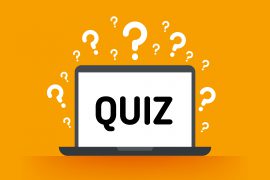Collaborative learning and teamwork skills continue to be the competency and graduate qualities that employers look for in graduates. As educators, we incorporate group assessments with the aim of providing students with an authentic learning experience as they reflect the real-world of work teams. But despite our good intentions and well-designed unit, we are often faced with students complaining about free riders.
There is ample research evidence to recommend that peer feedback helps to solve this issue where unit coordinators use peer ratings to moderate students’ group marks. Depending on the make-up or the student teams (e.g. diverse, or homogenous, if they know each other well or not, etc), peer ratings are subject to gaming where the students might rate all their team members highly to prevent negative impact on their own marks.
How do we design fair and authentic peer feedback?
Prompted by these challenges, this article aims to provide five simple tips on how to design a fair and authentic peer feedback that facilitates positive teamwork experience. I have piloted these teaching practices in both postgraduate (WORK5002) and undergraduate units (WORK2218).
1. Frame peer feedback as means to improve teamwork
Frame the objective to focus on learning how to work in teams and also on how to improve their teamwork experience. Explicitly state that managers and team leaders are expected to do this to improve team performance and teamwork in the real-world. Specifically, I would ask the students to assume that they are a leader or a supervisor of their student team, and it is their responsibility to develop their team members. To do this, they must ensure that provide peer feedback that:
- validates positive group behaviours (e.g. punctuality, contribution of ideas),
- attempts to highlight the areas of improvement or behaviours that are adversely affecting their ability to work in a team, and
- suggests and recommends strategies on how their peers can improve.
2. Reward students on their ability to develop constructive peer feedback
Do not use the peer ratings to determine the group assessment mark. Scholars have concluded that using peer feedback to determine group assessment marks is not always effective (Falchikov, 1995) as students tend to give their peers the same score because they are not willing to differentiate their peers’ contributions (Sprague et al., 2019). Instead, we should reward students on their ability to develop constructive peer feedback. As such, attach the marks using the criterion of how genuine and constructive their peer feedback is. The aim is to ensure that they act like supervisors and managers who are supportive, so their peer feedback should not be toxic or negatively framed. Instead they must be framed in a supportive and positive tone, whilst still being honest in highlighting the areas of improvement and/or providing specific strategies for improvement.
This has been a game changer in the process of learning especially peer learning and teamwork experience as students are in control of their marks. Hence, they are motivated to write feedback that fulfils the criteria and helps their teammates. Though this may appear to present the ‘carrot’ for students to receive good marks, turning the table by rewarding students’ ability to write constructive feedback has helped them to provide feedback that was genuinely helpful to improve their teamwork experience. Furthermore, framing the feedback in a supportive manner has helped them to not be defensive, but instead to be open to engage with feedback.
3. Provide exemplars of constructive feedback
Do not assume that students understand what constitutes ‘constructive feedback’. One of the most critical reflective moments as a teacher was when I read a student’s comment, “It would be great if the teacher could provide examples of what is ‘constructive feedback’ because I do not know.” Hence, it is critical to provide the scope of areas to be rated and exemplars on how to write the feedback. In my units, I use the measurements by Brutus et al. (2013) as their teamwork components (i.e. cooperation, research and idea generation, practical contributions and work ethics and attitudes) are aligned with my assessments’ learning tasks and outcomes. Here are some of the examples I have in my units:
Definition: Constructive feedback should focus on validating the person’s strengths whilst also providing specific tasks and suggestions on how your team members can improve.
Ratings on Cooperation (This is one of the area of teamwork that must rate their peers):
Exemplar 1:
Peer rating: 3 out of 5 (The rating is above average as the feedback showed that you are generally satisfied with this peer who is helpful and collaborative. However, it is not a 5 out of 5 because he/she was not punctual and was slow to respond.)
“Dear X, you are very helpful and collaborative. I appreciated that you are always punctual, and you never miss our team meetings. However, it would be great if you could please respond a bit quicker, as we were often waiting for you to confirm your availability. This will help us move things along more efficiently. Other than this, I think you are a great team member to work with.“
Exemplar 2:
Peer rating: 1 out of 5 (The rating is placed at 1 because you had objectively assessed that this peer’s contribution to the team was below par, as he/she did not attend meetings, and his/her communication was not always helpful, and the team had to re-work his/her submission. This implies that his/her contribution was not acceptable but there were clear strategies provided to assist this peer. In addition, the qualitative feedback was still framed in an empathetic manner to show your support.)
“I truly empathise with what you have been going through at the personal level. I know it has been challenging, but I would like to suggest that you still come for meetings especially the key meetings because email responses do not really help to communicate our thoughts. While I understand that you have carer’s responsibilities, maybe you could come for a short while so we can make the critical decisions pertaining to your sections. We would like to support you, but it would be unfair for the rest of the team members when we are re-working your sections because we had misinterpreted your email. Finally, maybe let the coordinator know of your personal challenges as there are support mechanisms. Hope you hear my intentions well.”
4. Anonymise the peer feedback
Scholars recommend that peer feedback should be anonymised as this creates a psychologically safe space for students to give honest and genuine feedback (Senden et al, 2023; Soares & Lopes, 2020) and this remains true in my experience. Research has also established that students often feel uncomfortable and incompetent in both the assessee and assessor roles (Senden et al., 2023). Hence, anonymising their peer feedback where their names were not displayed to their peers helped to provide the freedom and safety to genuinely assess their peers’ contributions. I use SRES’ function to implement the peer feedback, which I will elaborate more in the next element.
5. Implement the peer feedback twice
It is also important to implement the peer feedback process twice so that students have an opportunity to engage with the feedback and improve. I used SRES’ peer feedback functionalities (peer feedback and an SRES portal) to implement ‘double-loop’ peer feedback.
At the beginning of the student project (loop 1), students were asked to evaluate their peers’ contribution to the team after they had submitted their first group assessment (i.e. group report). The students are given about a week to reflect on their peers’ contribution on four areas; cooperation, research and idea generation, writing the group report, and their work ethics and attitudes (Brutus et al., 2013). Once all peer feedback have been received, I would review them to ensure that students did not write unhelpful feedback. However, given that I had set the criteria and exemplars on how to develop constructive feedback, I found that students were focused on the criteria and there weren’t any instances of toxic feedback. The peer feedback was anonymised and subsequently published using an SRES portal. Students were advised that they were encouraged to use the peer feedback to improve their team contribution as the objective of the group assessment was to develop their collaborative and teamwork skills. I found reiterating the objectives and the benefits of engaging with their peer feedback was critical so that students are able to appreciate the reasons for their actions.
The second loop was subsequently carried out after they completed the second part of their group assessment (i.e. group presentation). Students were given about three weeks to work on this second assignment, which meant that they were given time to both work on the areas that require improvement, and also for their peers to gauge if they were trying to improve. I would consistently remind them of their peers’ feedback and that they would have an opportunity to evaluate one another again, so they should try to improve their behaviours. Like the first loop, the peer feedback would be anonymised and published.
The double-loop peer feedback allowed students to engage with their peer feedback and improve. Students have expressed in my unit of study survey:
- “working in groups on the 2 group assignments… helped me reflect on my own deep-level and surface-level motivations throughout my uni career. Also, hearing from my peers and them critiquing on me, really helped me as well“.
- “My favourite part was that my peers not only made me aware of behaviours that I could change to improve, but they also made me aware of behaviours that to them was really helpful, but to me I didn’t think much of it.
These comments were the first I have seen where the students truly appreciated the peer evaluation process and had used them to improve. I also had no complaints about free rider or their challenge is teamwork.
In conclusion, design the peer feedback to focus on the process of learning to build collaborative and teamwork skills. The critical success factor of the peer feedback in my units is to reward the students on their ability to develop their skills in providing constructive feedback to their peers.





